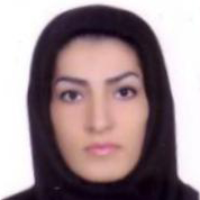A Study of Human Statuettes from Northeast of Ancient Iran and Central Asia in the Bronze Age from the view of Morphology
In the Iranian plateau, technological advances have always been evolving. The beginning of the third millennium for most parts of Iran shows the process of extensive socio-cultural changes, which are often considered as signs of the beginning of the early Bronze Age. The most important of these changes, based on archaeological evidence, are technological and demographic changes, trans-regional trade relations, and the formation of the first government-based societies. The invention of the bronze complemented the method of creating and studying metal objects, and the demand for raw materials increased. This source of wealth made Iran one of the most important producers of copper, tin, lead, wood and stone among the nations. From the third millennium to the first centuries of the second millennium BC, there was a trade relationship between Afghanistan, Turkmenistan, Iran, and Mesopotamia. Thus, the civilization and culture of this region of the world have in many cases been in close and direct contact with each other. Discovering alloy, humankind recitative tools had evolved in life, religion, business and art. In the Bronze Age, northeast of ancient Iran and Central Asia had great similarity in culture and art. In these two region, human Statuettes had been built from the stone and copper with little dimension in abstract method and had remarkable nicety and delicacy which can be indicated the relevance and interactions of northeast of ancient Iran and middle Asia in the Bronze Age. The purpose of this project is finding the answer of this question that: how was the similarity rate of human Statuettes from northeast of ancient Iran and middle Asia from the view point of form and usage? In the Bronze Age, the gender of many founded Statuettes had been built of women. These women Statuettes had been built with delicacy, subtlety and nicety from the view point of construct and body form in abstract method and condensate. They also had enforced on female organs with little tridimensional content in small size. These statuettes had religious usage which referred to the fertility and birth and had found in the burial bed. In the Bronze Age, communication and social interactions between northeastern ancient Iran and Central Asia were widespread, and accordingly, significant interactions can be seen in the culture and art of the people of these regions. These interactions and similarities are very noticeable in the human bodies found in the burial bed. Most of these statuettes are female. The statuettes of Hesar and Tourang in northeastern ancient Iran are similar in structure and form to Altin, Namazgah and Gnoor that made in a concise and abstract style with elegance, softness and emphasis on femininity and with open arms to the sides. It should be noted that in Central Asian sculptures, despite simplification in body shape, there is more reference to decorations, hair and clothing, however, in Turang, in spite of these cases, the tendency towards realism is also seen in some cases. This research has been done in comparative-descriptive method by using library data resources.
- حق عضویت دریافتی صرف حمایت از نشریات عضو و نگهداری، تکمیل و توسعه مگیران میشود.
- پرداخت حق اشتراک و دانلود مقالات اجازه بازنشر آن در سایر رسانههای چاپی و دیجیتال را به کاربر نمیدهد.



